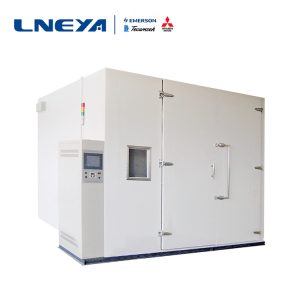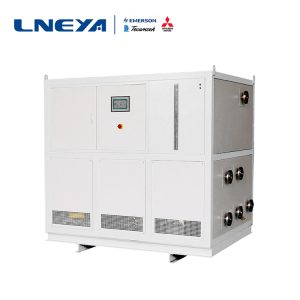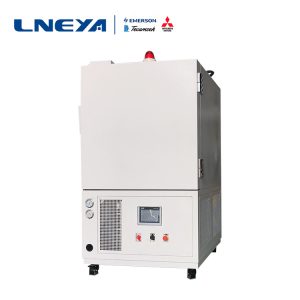Heating and cooling system for chemical reaction kettle reaction process
In the process of chemical chemical reaction, material temperature is an important production process parameter. For example, in salt crystallization, solution separation, organic pigment and intermediate processing, temperature control is particularly important. In order to achieve this goal, the reaction kettle is directly refrigerated and cooled, so as to achieve the purpose of indirectly reducing the temperature of the materials in the reaction kettle. For this reason, it is urgent to adopt suitable refrigeration equipment to lower the temperature of the reactor.

The heating and cooling system in the reaction process of the reactor is mainly used for cooling and cooling of the chemical reactor (chemical heat exchanger), and timely takes away the huge heat generated by the chemical reaction to achieve the purpose of cooling (cooling) and improve the quality of the product. The main heating and cooling system of the reactor reaction process is also called the chemical water chiller and the reactor water chiller, which are widely used in chemical and pharmaceutical industries.
In chemical production, because of the large refrigeration capacity, some tens of thousands of kcal per hour, there is a large demand for low-temperature refrigeration. The rate of most chemical exothermic reactions in the reactor cooling system will increase with increasing temperature and decrease with decreasing temperature. If the reaction temperature is lowered, the reaction will slow down, and the unreacted materials may accumulate in the reactor.
During the reaction, the temperature rises again, and the unreacted materials may start to react. If there are enough unreacted materials, the heat released by the reaction may exceed the cooling capacity of the reactor. In the selection of chiller equipment, chemical industry practitioners should pay special attention, otherwise it will cause refrigeration mismatch, high energy consumption, and even product quality problems, affect normal production, and increase enterprise operating costs.
Different types of production require different temperature conditions for the reactor to cool down. LNEYA provides room temperature reactor cooling, medium temperature reactor cooling, low temperature reactor cooling, cryogenic reactor cooling, etc., heating and cooling systems and temperature solutions for the reactor reaction process at various temperatures.
Recommandations connexes
-
How to eliminate the failure of large thermal shock test chamber?
1021As technology continues to advance and improve, LNEYA recommends strict requirements for operators of large thermal shock test chambers. If used improperly, operators need to be able to face and resolve these problems in a timely manner. A large t...
Voir les détails -
Meet in Shanghai World Expo Pavilion 【Pesticide Exhibition】Booth 1G10 10.12-10.14
1311Exhibition name: The 20th National Pesticide Exchange Conference and Agrochemical Products Exhibition HallExhibition time: October 12-14, 2020Booth number: 1G10Exhibition address: Shanghai World Expo Exhibition Hall ,
Voir les détails -
Comment le système de réfrigération du réfrigérateur cryogénique se vide-t-il ?
1643Users who use ultra-low temperature chillers will encounter some problems when they are not used for a long time, such as poor cooling performance and loud sound. These problems are more common, but some refrigeration systems need to be well under...
Voir les détails -
What are the influencing factors of the industrial refrigerator with minus 200 degrees?
1045In order to better use the industrial refrigerator with a temperature of minus 200 degrees, you need to understand some influencing factors and how to avoid it. The oil temperature will have an important effect on the viscosity of the industrial r...
Voir les détails
 LNEYA Industrial Chillers Fabricant Fournisseur
LNEYA Industrial Chillers Fabricant Fournisseur














